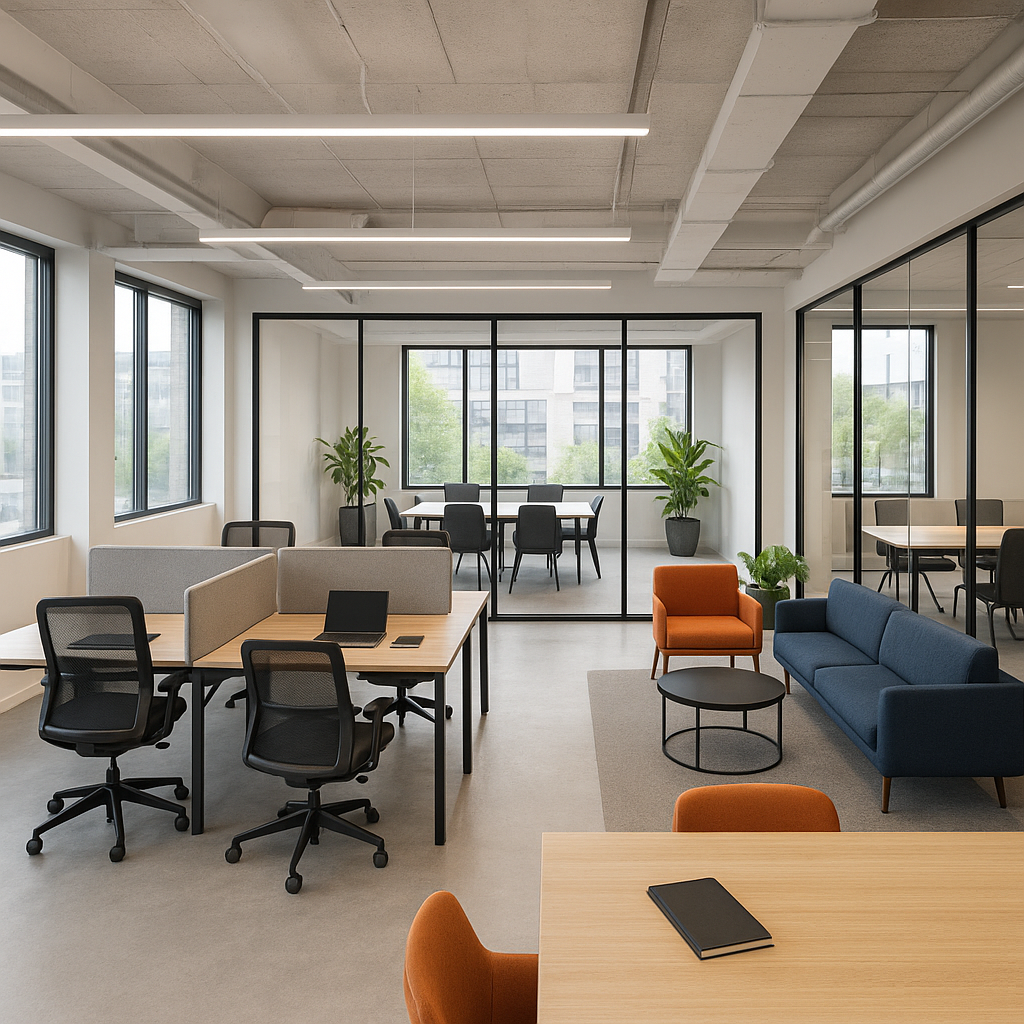
Get In Touch
The Role of Flexibility in Office Design – Adapting workspaces for hybrid and evolving business needs.
In the last few years, the way we work has transformed dramatically. Hybrid work models, evolving business needs, and a renewed focus on employee well-being have redefined what modern office spaces should look like. For commercial construction companies like Shyam Constructions, flexibility in office design is no longer a luxury—it’s a necessity.
Why Flexibility Matters Today
The traditional office with rigid cubicles and fixed layouts is becoming outdated. Businesses want spaces that can adapt quickly to:
Hybrid Work Models: With employees alternating between office and remote work, offices need to support both in-person collaboration and quiet, individual work.
Changing Teams: Start-ups and corporates alike deal with expanding or contracting teams, requiring scalable space solutions.
Innovation Needs: Work environments should inspire creativity, foster teamwork, and support diverse work styles.
Flexible design ensures that the office remains functional and relevant even as business requirements evolve.
Key Elements of Flexible Office Design
Modular Layouts
Movable partitions, modular furniture, and adaptable floor plans allow businesses to reconfigure spaces quickly—converting open areas into meeting rooms or breakout zones as needed.Multi-Purpose Spaces
Designing spaces that serve multiple functions—like a cafeteria doubling as an event space—optimizes square footage while encouraging collaboration.Technology Integration
Hybrid work relies on seamless digital collaboration. Offices now need smart boards, video conferencing setups, soundproof pods, and strong connectivity infrastructure.Hot Desking & Co-Working Corners
Instead of assigning fixed desks, companies are embracing hot desking. This reduces unused space and gives employees freedom to choose where they work best.Wellness-Focused Design
Natural lighting, biophilic elements (plants, greenery), and ergonomic furniture support employee health, which in turn boosts productivity.Future-Proofing with Sustainability
Flexible design goes hand in hand with eco-friendly solutions—energy-efficient lighting, recyclable materials, and green certifications add long-term value to the workplace.
Benefits for Businesses
Cost Efficiency: Maximizing usable space lowers overheads.
Employee Satisfaction: Flexibility allows staff to choose how and where they work, improving morale and retention.
Scalability: As companies grow or downsize, the office can adapt without expensive renovations.
Stronger Brand Image: Modern, flexible offices reflect forward-thinking, innovative companies.
How Shyam Constructions Delivers Flexibility
At Shyam Constructions, we understand that every commercial project is unique. Our approach to flexible office design includes:
Consulting with businesses to understand hybrid work needs.
Incorporating modular layouts and smart technologies from the ground up.
Ensuring sustainability and compliance with international standards.
Designing offices that aren’t just workplaces but vibrant ecosystems for growth.
Final Thoughts
Flexibility in office design is not just about rearranging furniture—it’s about future-proofing workplaces. As hybrid models continue to evolve, businesses that embrace adaptable, employee-friendly designs will have the edge.
At Shyam Constructions, we build commercial spaces that are ready for today—and adaptable for tomorrow.

